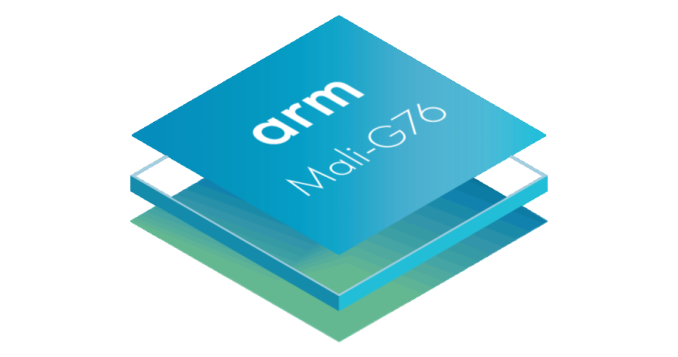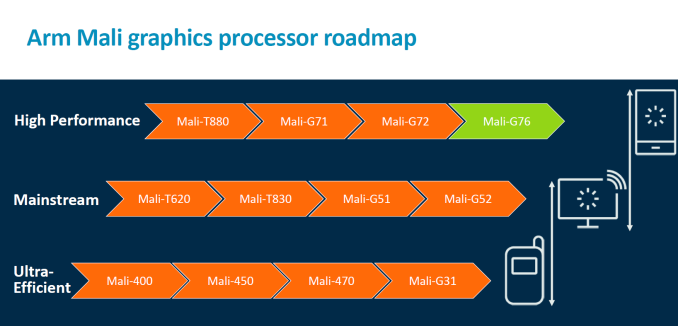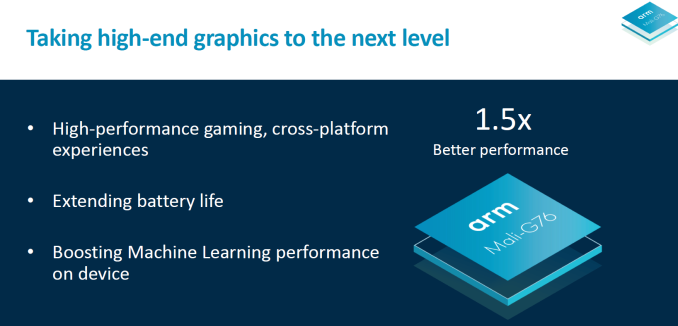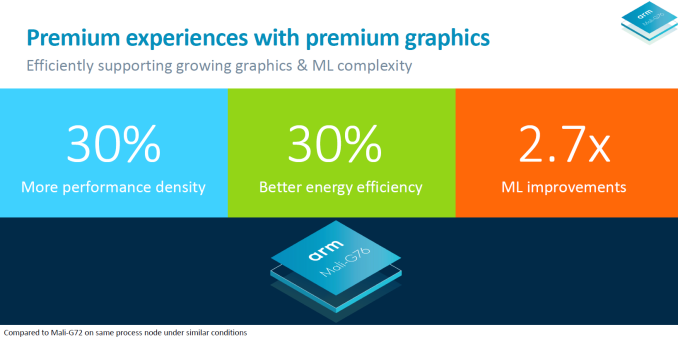Arm Announces Mali-G76 GPU: Scaling up Bifrost
by Ryan Smith & Andrei Frumusanu on May 31, 2018 3:00 PM EST
Section by Andrei Frumusanu
It’s been two years since Arm announced their first “next-generation” GPU architecture based on Bifrost and alongside with it its first implementation the G71. Following its release in the first products the GPU was off to a very shaky start as the G71 was quite a disaster in the Kirin 960 and Exynos 8895 as both GPU implementations blew past their power budgets in severe manners.
This year’s G72 was a much more reasonable product as it offered up to a 100% improvement in efficiency in the Kirin 970 and Exynos 9810, putting the G72 a lot nearer to the performance and efficiency targets that the Bifrost architecture was promised to achieve.
Today’s Arm announces the follow-up to the G72 and the latest offspring in the Bifrost family: The Mali G76. The targets of the GPU IP should be pretty clear: Improve performance, efficiency and area and try to catch up with the competition as much as possible.
Overall what Arm promises for the next generation of SoCs using the G76 on a new TSMC 7nm process is a 50% increase in performance versus current generation devices.
In terms of apples-to-apples comparisons, we see three key metrics that are improved: A 30% improvement in performance density is the first one. What this means is that either for the same area, the new GPU will perform 30% better, or for the same performance, the vendor can shrink the GPU space on the SoC.
The new GPU promises a 30% microarchitectural efficiency improvement thanks to a consolidation of the functional blocks of the unit. Efficiency is particularly something Arm needs to focus on in regards to Mali as we’ve seen a few missteps over the last year or two and the competition from Qualcomm in the GPU and 3D gaming space is particularly fierce.
Finally, there’s a quoted 2.7x improvement for machine learning inferencing applications thanks to the inclusion of new dedicated 8-bit dot product instructions.













25 Comments
View All Comments
eastcoast_pete - Friday, June 1, 2018 - link
I expect some headwind for this, but bear with me. Firstly, great that ARM keeps pushing forward on the graphics front, this does sound promising. Here my crazy (?) question: would a MALI G76 based graphics card for a PC (laptop or desktop) be a. feasible and b. be better/faster than Intel embedded. Like many users, I have gotten frustrated with the crypto-craze induced price explosion for NVIDIA and AMD dedicated graphics, and Intel seems to have thrown in the towel on making anything close to those when it comes to graphics. So, if one can run WIN 10 on ARM chips, would a graphics setup with, let's say, 20 Mali G76 cores, be worthwhile to have? How would it compare to lower-end dedicated graphics from the current duopoly? Any company out there ambitious and daring enough to try?eastcoast_pete - Friday, June 1, 2018 - link
Just to clarify: I mean a dedicated multicore (20, please) PCIe-connected MALI graphics card in a PC with a grown-up Intel or AMD Ryzen CPU - hence "crazy", but maybe not. I know there will be some sort of ARM-CPU based WIN 10 laptops, but those target the market currently served by Celeron etc.Alurian - Friday, June 1, 2018 - link
Arguably MALI might one day be powerful to do interesting things with should ARM choose to take that direction. But comparing MALI to the dedicated graphics units that AMD and NVIDIA have been working with for decades...certainly not in the short term. If it was that easy Intel would have popped out a competitor chip by now.Valantar - Friday, June 1, 2018 - link
I'd say it depends on your use case. For desktop usage and multimedia, it'd probably be decent, although it would use significantly more power than any iGPU simply due to being a PCIe device.On the other hand, for 3D and gaming, drivers are key (and far more complex), and ARM would here have to play catch-up with a decade or more of driver development from their competitors. It would not go well.
duploxxx - Friday, June 1, 2018 - link
like many users, I have gotton frustrated with and intel seems to have thrown in the towel....how does that sound you think?..........
easy solution buy a ryzen apu. more then enough cpu power to run win10 and decent gpu and if you think the intel cpu are better then ******
eastcoast_pete - Friday, June 1, 2018 - link
Have you tried to buy a graphics card recently? I actually like the Ryzen chips, but once you add the (required) dedicated graphics card, it gets expensive fast. There is a place for a good, cheap graphics solution that still beats Intel embedded but doesn't break the bank. Think HTC setups. My comment on Intel having thrown in the towel refers to them now using AMD dedicated graphics fused to their CPUs in recent months; they have clearly abandoned the idea of increasing the performance of their own designs (Iris much?) , and that is bad for the competitive situation in the lower end graphics space.jimjamjamie - Friday, June 1, 2018 - link
Ryzen 3 2200GRyzen 5 2400G
Thank me later.
dromoxen - Sunday, June 3, 2018 - link
2200ge2400ge
Intel has far from given up gfx , in fact they are plunging into it with both feet? They are demonstrating their own discrete card and hope for availability sometime in 2019. the amd powered hades is just a stop gap, maybe even a little technology demonstrator if you will. The promise of APU accelerated processing is finally arriving, most especially for AI apps.
Ryan Smith - Friday, June 1, 2018 - link
Truthfully I don't have a good answer for you. A Mali-G76MP20 works out to 480 ALUs (8*3*20), which isn't a lot by PC standards. However ALUs alone aren't everything, as we can clearly see comparing NVIDIA to AMD, AMD to Intel, etc.At a high level, high core count Malis are meant to offer laptop-class performance. So I'd expect them to be performance competitive with an Intel GT2 configuration, if not ahead of them in some cases. (Note that Mali is only for iGPUs as part of an SoC; it's lacking a bunch of important bits necessary to be used discretely)
At least if Arm gets their way, then perhaps one day we'll get to see this. With Windows-on-ARM, there's no reason you couldn't eventually build an A76+G76 SoC for a Windows machine.
eastcoast_pete - Friday, June 1, 2018 - link
Thanks Ryan! I wouldn't expect MALI graphics in a PC to challenge the high end of dedicated graphics, but if they come close to an NVIDIA 1030 card but significantly cheaper, I would be game to try. That being said, I realize that going from an SOC to a actual stand-alone part would require some heavy lifting. But then, there is an untapped market waiting to be served. Lastly, this must have occurred to the people at ARM graphics (MALI team) , and I wonder if any of them has ever speculated on how their newest&hottest would stack up against GT2, or entry-level NVIDIA and AMD solutions. Any off-the-record remarks?